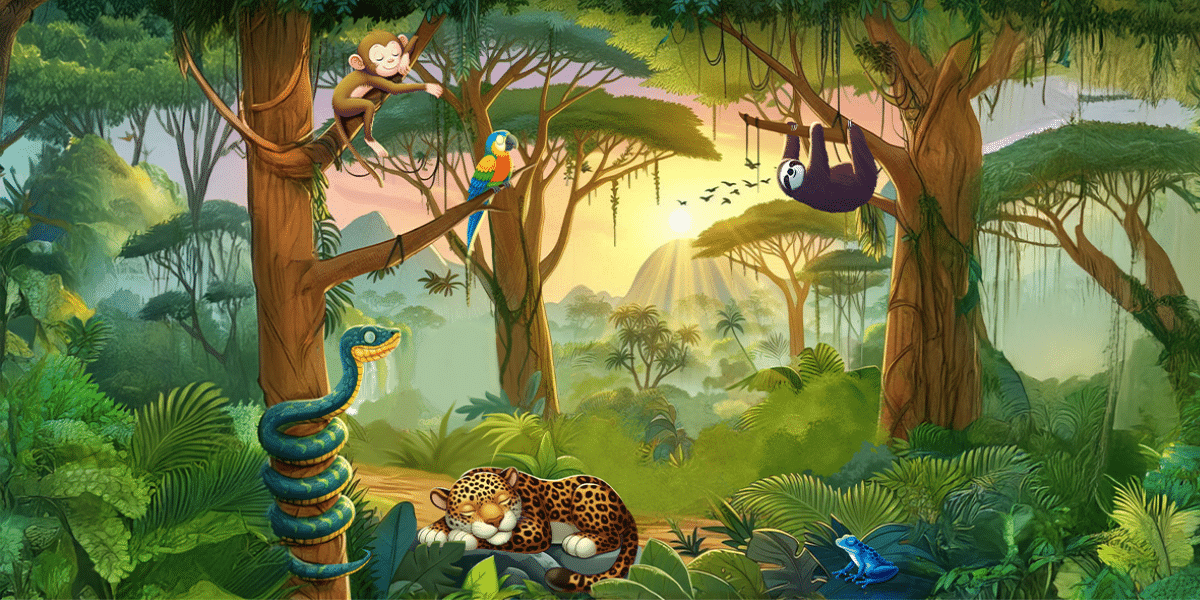By: Jason Gerber
Sleep is important to us all. But have you ever wondered how animals sleep? It turns out animals have all sorts of cool and strange sleeping habits that help them stay safe, comfy, and even balanced! Let’s dive into the animal kingdom and discover how some creatures catch their Zs in the wild. You might be surprised to find out how different their snoozing habits are compared to ours.
Why Do Giraffes Sleep the Least?
Giraffes, with their super tall necks and long legs, are not exactly built for long naps. In fact, they are the animals that sleep the least. On average, giraffes sleep for only about 30 minutes a day. But why so little?
Giraffes spend much of their time grazing on tall trees and have to be on high alert for predators. Sleeping on the ground isn’t exactly easy for them because it takes a while for them to stand up. Instead, they take short naps while standing. Sometimes, they fold their legs beneath them and rest their heads on their backs for a quick snooze. Imagine trying to nap and standing up. Wouldn’t that be tricky?
Sea Otters: Masters of Floating Naps
Now, let’s talk about one of the cutest animals that naps in a truly magical way: sea otters! These furry creatures live in the water, and guess what? They sleep on their backs, floating in the ocean. Sea otters don’t just aimlessly float while they sleep. They have a clever way of staying safe.
To ensure they don’t drift away, sea otters wrap themselves in seaweed like a cozy blanket. Sometimes, they even hold hands with other otters to stay together while they sleep. It’s like a big otter raft, gently rocking in the water under the stars. How cool is that?
How Flamingos Balance While Sleeping
Have you ever seen a flamingo standing on one leg? These pink, graceful birds are known for their incredible balance; they can even sleep standing on just one leg. But why do they do that?
Flamingos stand on one leg to keep warm. When they tuck one leg under their body, they conserve heat and stay cozy in the cool water. What’s more impressive is that they can stay perfectly balanced while they nap. With their heads resting backward on their bodies, flamingos manage to sleep in the water without a care in the world.
Can you imagine trying to sleep while balancing on one leg? It sounds like a fun trick to try, but flamingos are the true experts!
Bats: Sleeping Upside Down
No article about animal sleep would be complete without mentioning bats. These creatures take napping to the next level by hanging upside down. Bats sleep in caves, under bridges, or in hollow trees, hanging by their feet with their heads pointed down. It helps them stay safe from predators and quickly fly away if needed.
With short legs and weak wings, bats have an easier time flying straight out of their upside-down position than taking off from the ground. So, sleeping upside down isn’t just a fun trick. It’s a smart survival strategy.
Conclusion
From giraffes’ short naps to sea otters’ floating slumbers, animals have developed some amazing ways to sleep in the wild. Each creature has its unique style that helps them stay safe and sound while getting the rest they need. Want to learn about even more fascinating facts about how animals sleep? Grab your copy of Sleep Like an Animal by Sara Libi Scribens! The book is packed with fun rhymes, colorful illustrations, and wild sleeping secrets. A perfect bedtime read for curious little explorers. Get ready to snooze like your favorite animal!
Published by: Josh Tatunay

















